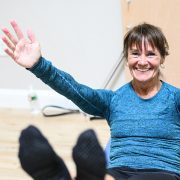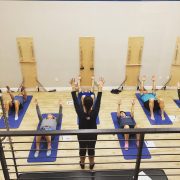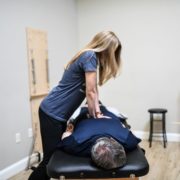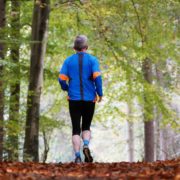Five Reasons to Include Pilates in Your Life
Pilates has been around for about 100 years, yet so many people have NOT heard of this incredible exercise method. It was first created by Joseph Pilates and initially gained popularity among the dance community as a way to recover from and prevent injuries.
But you don’t have to be a dancer to practice Pilates or enjoy the benefits. It’s become very mainstream over the years and for good reason.
I’ve been incorporating Pilates into my physical therapy practice for the last 11 years and it’s been transformational.
Pilates is a full body strengthening system that emphasizes breath, precision, coordination, and core strength. It helps our clients connect to their bodies in a way they haven’t been able to achieve with traditional strengthening methods. Most of my clients are well into their 50’s and 60’s, and they love Pilates because it helps them have more energy, better balance, and improved strength and mobility. It allows them to participate in all the activities they love with more ease – and most importantly – significantly decreases the likelihood of injury.
But not all Pilates classes are created equal. And it’s important you choose your Pilates studio based on what your most important needs are.
Here are five reasons to consider adding Pilates to your life – and things to watch out for when choosing a program:
1. Pilates helps prevent back pain.
Once you hit 40, your risk of back injury starts to climb. We see a lot of folks in our office who’ve tried traditional physical therapists or chiropractors, and so many different kinds of core strengthening programs, but still have recurring back pain. They’ve been successful in getting rid of their pain in the short term, but they aren’t able to keep it gone for the long term.
Keeping pain GONE is what we specialize in – and one of the ways we do that is with Pilates. But “general/cookie-cutter” Pilates isn’t always enough.
For example, our Pilates instructors work closely with our PT team and get enhanced training on how to navigate back pain, and we keep our classes small so that we can pay close attention to everyone. If you’re recovering from an injury, or vulnerable to back pain, you’ll want to beware of classes that are overcrowded and not individualized. More than 5-6 people in a class when you’re trying to recover from back pain could be dangerous and increase your likelihood of re-injuring yourself. It’s impossible for your instructor to keep a close eye on you or give you individualized modifications when there are too many people in class.
2. Pilates strengthens your whole body, not just your core.
One of the keys to lifelong fitness is what I call “balanced strength.” In other words, each part of your body works together to produce the right amount of force, at the right time. I see lots of “strong” people in my office, but they can’t do the activities they love, because their muscles aren’t working together in the right way at the right time. This can result in compensatory patterns over time – that may predispose you to injury.
Pilates emphasizes full body strength that is coordinated. Coordinated strength is essential if you want balanced strength – which will give you the best shot at avoiding injury.
3. Pilates improves your flexibility.
Do you stretch your hamstrings every day but they never seem to improve?
It could be because you’re not stretching the right way – OR – it could be that you shouldn’t be stretching them at all! (Conversation for another day…)
Either way, the great thing about Pilates is that it improves your flexibility in a way that strengthens at the same time. The “old school” way of stretching was to find the most uncomfortable position for your muscle and just hold it for 30 seconds. Research has shown this is not effective in most cases. The best way to stretch is to do it dynamically with movement. In Pilates, you never stop moving, and one of the central concepts to the practice is “lengthening”. Basically, you use the concept of self-induced opposition to strengthen and stretch at the same time – this is how you end up with flexibility that lasts.
4. Pilates minimizes stress on your joints.
Aging is a real thing and along with it comes arthritis. But it’s not a death sentence like most people are led to believe. The key to combating arthritis is maintaining a mobile and well balanced joint. When you optimize everything that surrounds your arthritic joints, your symptoms decrease.
Pilates helps with all this – without causing any additional stress.
Since Pilates is based on the idea of constant opposition – lengthening while strengthening – you end up with a joint that is happy and balanced when you incorporate a regular practice of Pilates into your life. It helps to minimize the impacts of arthritis and even prevent the rate of degeneration.
5. Pilates trains your nervous system.
Say what? Is this even something I should care about?
Yes it is — and it’s almost ALWAYS a missing link I find for people who’ve been at a certain activity for a really long time, and then suddenly start having pain.
If you don’t train your nervous system, it gets lazy, and compensation patterns develop. When one part of your body is compensating for another, it ultimately leads to imbalance. The right type of Pilates will help with this.
Notice I said “right type.”
If you’re looking to just work out and have fun, then almost any Pilates will do. But if you’re wanting to truly correct your body’s imbalances and train your nervous system, Pilates is still your ticket but it needs to be with a qualified instructor.
If you’re not yet incorporating Pilates into your everyday routine… what are you waiting for!?
It’s my go-to exercise system for folks over the age of 40 and it’s my favorite way to help people keep their back pain gone.










